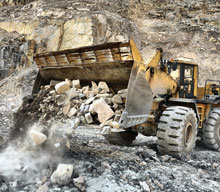Summary on Ultra Low Sulphur Diesel
ULSD fuels are inherently unstable and more affected by thermal stress.
To remove sulphur and aromatics from diesel fuel to meet the ULSD specifications, refiners utilize a process called hydro-treating. Unfortunately the hydro-treating process also removes many of the nitrogen and polar compounds that provide natural lubricating properties in diesel fuel. Modern diesel engines rely on diesel fuel to lubricate fuel injectors and pumps in both High Pressure Common Rail (HPCR and non-HPCR) equipped engines. Without proper lubrication, the components of these systems are subjected to increased wear and premature failure.
The natural anti-oxidation properties of diesel fuel are decreased as sulphur is removed causing ULSD to become thermally unstable when exposed to extreme heat. Temperatures within the HPCR injectors can exceed 176 °C, which causes thermally unstable ULSD fuels to darken, produce residues, form sediments and solid deposits that results in premature fuel filter plugging and injector failure. Furthermore deposits in the injector valve seats and nozzle areas caused by a chemical reaction between corrosion inhibitors and sodium or calcium commonly found in ULSD at low ppm levels has a detrimental side effect on the fuelling into the combustion chamber resulting in increased emissions, decreased fuel economy and excessive power loss.
Thermal instability can also cause the formation of asphaltenes which are naturally occurring organic hydrocarbons found in diesel fuel that contribute positively to the fuel’s BTU value. Extreme heat causes asphaltenes to polymerize and come out of suspension, resulting in black soot formation on fuel filters, pumps and injectors.
The scientific facts
The combustion of hydrocarbons fuel in internal combustion engines is an extremely complex event, encompassing many variables and far from being completely understood. The most important process to ensure proper combustion is the perfect mixture of fuel and air in addition to many other variables.
PS-279-D chemistry and mechanism
It’s an ULSD fuel that has been fortified by isomers at a molecular level through a process of isomerization. Isomers are compounds with the same molecular formula but different structural formulas. Isomers do not necessarily share similar properties, unless they also have the same functional groups and there are many different classes of isomers. Isomerization is the process by which one molecule is transformed into another molecule which has exactly the same atoms, but the atoms are rearranged. When the isomerization occurs intra-molecularly it is considered a rearrangement reaction.
The basic premise of diesel combustion is its unique way of releasing the chemical energy stored in the fuel. To perform this process, oxygen must be made available to the fuel in a specific manner to facilitate combustion. One of the most important aspects of this process is the mixing of fuel and air, which is a process often referred to as mixture preparation and thus the primarily performance of our development to ensure a more complete air/fuel mixture activity.
In diesel engines, fuel is often injected into the engine cylinder near the end of the compression stroke, just a few crank angle degrees before top dead centre. The liquid fuel is usually injected at high velocity by one or more jets through small orifices or nozzles in the injector tip. It atomizes into small droplets and penetrates into the combustion chamber. The atomized fuel absorbs heat from the surrounding heated compressed air, vaporizes, and mixes with the surrounding high-temperature high-pressure air.
The following factors play a primary role in the diesel combustion process:
- The inducted charge air, its temperature, and its kinetic energy in several dimensions.
- The injected fuel’s atomization, spray penetration, temperature, and chemical characteristics.
While these two factors are most important, there are other parameters that may dramatically influence them and therefore play a secondary, but still important role in the combustion process.
The physical behaviour of diesel fuel inhibits the proper air/fuel mixture process and consequently the exceptional method of PS-279-D to substantially improve this important procedure without affecting the composition of the fuel.
The mechanism of our development is the manner in which the proprietary blend of isomers provides a viscoelasticity characteristic to the fuel droplets which results in a hydrodynamic charge upon the fuel. Viscoelasticity is the property of materials that exhibit both viscous and elastic characteristics when undergoing deformation which in essence is a molecular rearrangement.
When stress is applied to the isomer fortified fuel under pressure during the injection process the fuel droplets displays a viscous and elastic feature which restrains the formation of mist. The deformation of the fuel droplets ensure a more unbroken spray pattern of larger droplets which will result in a more perfect air/fuel mixture and eventuating a more homogeneous blend at ignition.
Isomer fortified fuels will considerably reduce the temperature in the combustion chamber and eliminate detonation in spark ignition IC engines. The octane number of a fuel signifies its ability to resist pre-ignition combustion and the temperature has a direct relationship on an engine’s octane requirement.
When unburned fuel/air mixture beyond the boundary of the flame front is subjected to a combination of heat and pressure for certain duration (beyond the delay period of the fuel used) detonation may occur. Detonation is characterized by an instantaneous, explosive ignition of at least one pocket of fuel/air mixture outside of the flame front. A local shockwave is created around each pocket and the cylinder pressure may rise sharply beyond its design limits. If detonation is allowed to persist under extreme conditions or over many engine cycles, engine parts can be damaged or destroyed.
The direct influence attributing to a more complete combustion process will cause an increase in power output, lowered fuel consumption and reduction in emissions. The viscoelastic properties of the product will ensure proper lubrication qualities in Ultra Low Sulphur Diesel especially when a kerosene mixture (although not recommended) is used during winter months.























